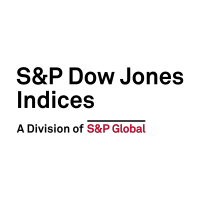S&P DJI’s Global Islamic Equity Benchmarks Rose 13% in H1 2024, Outperforming Conventional Benchmarks
Global equities extended their upward trend into Q2 2024 on the back of sustained economic growth and moderating inflation. The S&P Global BMI posted a healthy 10.4% return in the first half of the year, led by the U.S where the S&P 500® had an impressive run with a 15.3% gain and new record highs….
Dispersion at All-Time High Relative to Volatility as Earnings Season Arrives
Despite a recent uptick to a more normal level near 16, the Cboe Volatility Index (VIX®) has averaged around just 12.8 over the past 30 trading days as of July 18, indicating relative calm in U.S. equities. Meanwhile, a complementary measure of U.S. equity market risk, the CBOE S&P 500® Dispersion Index (DSPX), has surged…
Frequent Flyers
Planes are interesting places, airborne aluminum tubes stuffed with strangers from all walks of life, including seatmates prodding with the proverbial ice-breaker, “So, what do you do?” Overhearing many such conversations, I’ve found complicated job descriptions elicit blank stares and subsequently lead to higher-level answers such as “Well, I’m in tech,” or “I work in…
The S&P/ASX Index for “Larger,” More Liquid Small Caps
What would you get if you carved out the 100 smallest companies in the S&P/ASX 200 into their own index? You’d have the S&P/ASX 200 Ex-S&P/ASX 100 Index. Alternatively, you’d have also segmented the largest 100 companies in the S&P/ASX Small Ordinaries. Companies listed on the ASX are grouped into broad market, large-, mid- and…
Why Does the S&P 500 Matter to the Middle East?
Explore the expanding ecosystem of the iconic S&P 500 as S&P DJI’s Tim Edwards joins Cboe’s Sarju Gudka for a closer look at how and why market participants are putting the definitive gauge of U.S. large-cap equities to work in the Middle East.
Tracking Potential Opportunities with Dispersion
Is it possible to track opportunity with an index? Find out as S&P DJI’s Tim Edwards and Cboe’s Mandy Xu discuss the design of and practical applications for the Cboe S&P 500 Dispersion Index.
Why is Passive Investing on the Rise in South Africa?
Explore what’s driving increased interest in indexing and the growing role of custom index solutions in South Africa with S&P DJI’s Marius Baumann and Chris Rule of 10X Investments.
How Is Indexing Informing Income Seekers?
S&P DJI’s Jason Ye and Altere Financial’s Andy Sharp join Nadine Blayney at Ausbiz to discuss how some advisors are using indices to help inform income-seeking clients as they plan for the future.
S&P World Index: A Global Benchmark for Comprehensive Coverage
Introducing a benchmark that digs deeper into developed markets, with data that extends over several economic cycles. Discover how the S&P World Index sets the standard for developed market indices.
S&P DJI’s Global Islamic Equity Benchmarks Rose 9% in the First Quarter, Extending Outperformance against Conventional Benchmarks
Global equities had a strong start to the year as economic resilience and diminishing recession fears boosted risky assets overall. The S&P Global BMI surged 7.8% in the first quarter, led by developed markets; notably, the S&P 500® finished the quarter up 10.6%, at a new record high. Shariah-compliant global benchmarks beat their conventional counterparts,…



















































